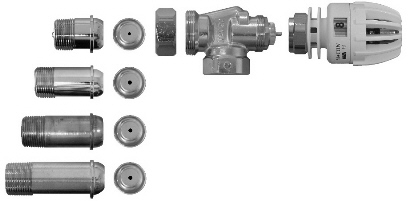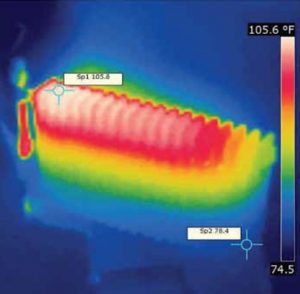Steam Radiator Inlet Orifice Plates

Steam Radiator Inlet Orifice Plates
Orifice Plates are used in valves suitable for two-pipe steam. Different length tailpieces available. Radiator inlet orifices in sizes 1/2″, 3/4″, 1″ & 1-1/4″. When used with a Macon TRV on steam it provides individual room control while regulating the amount of steam into the radiator.

If your building utilizes steam for heat, perhaps you have recently heard of Orifice Plates. Maybe you have heard of them as being “little copper bottle caps” that you drill a hole through and install on a steam radiator or convector. Simple, right? Not really. Sure, at first glance, the Orifice Plate may appear to be just a round piece of copper with a hole, however, this is a carefully custom manufactured product and there are many factors and information that gets collected to determine exactly what size to make that hole and that is absolutely critical to proper functionality. Why? There are two very important reasons that this little hole needs to be the correct size. The hole has to be large enough to allow enough steam into the radiator to satisfy the temperature setting on the Thermostat but not enough steam where it reaches the thermostatic steam trap which could potentially allow live steam into your return which will cause all kinds of problems like water hammer, pressurized returns, cavitated pumps and ultimately, cold radiators. If an Orifice Plate is sized correctly, you can reduce maintenance by not having to repair that thermostatic steam trap any longer as the steam will condense, give off its latent heat and turn back to condensate before it reaches the steam trap as you can see from the thermal image picture below. Tunstall Corporation has the knowledge and expertise to size the Orifice Plates correctly.


A Brief History
Urban Green Report on How To Make Steam Heating More Effective from February 11, 2019:
Demystifying Steam
Steven Winter Associates Study
New York Times Article and Report from November 20, 2015:
Simple Upgrade to Steam Radiators Slashes Emissions
“The plates never wear out,” and even help the system run better. Read the entire The New York Times orifice plate article .
A new study by Energy Efficiency for All and Steven Winter Associates, Inc. reports on how installing Steam Radiator Orifice Plates cut back on energy waste and carbon emissions. The Steam Radiator Inlet Orifice Plate and thermostat featured in the article is our Macon Model MTW Direct Mount Non-Electric Thermostat with Inlet Orifice.
If you would like to receive more information or speak with a Tunstall or Macon Representative, please use our “Contact Us” form here.
“The team at Tunstall is always great to work with. They are very customer service oriented; their responsiveness and flexibility has helped many of our projects get from design to successful completion. And their ability and willingness to custom-fabricate parts is a big advantage when looking for ways to save installation time and costs”.
Jason Block, PE
Deputy Director, Multifamily Energy Services
Steven Winter Associates, Inc.
